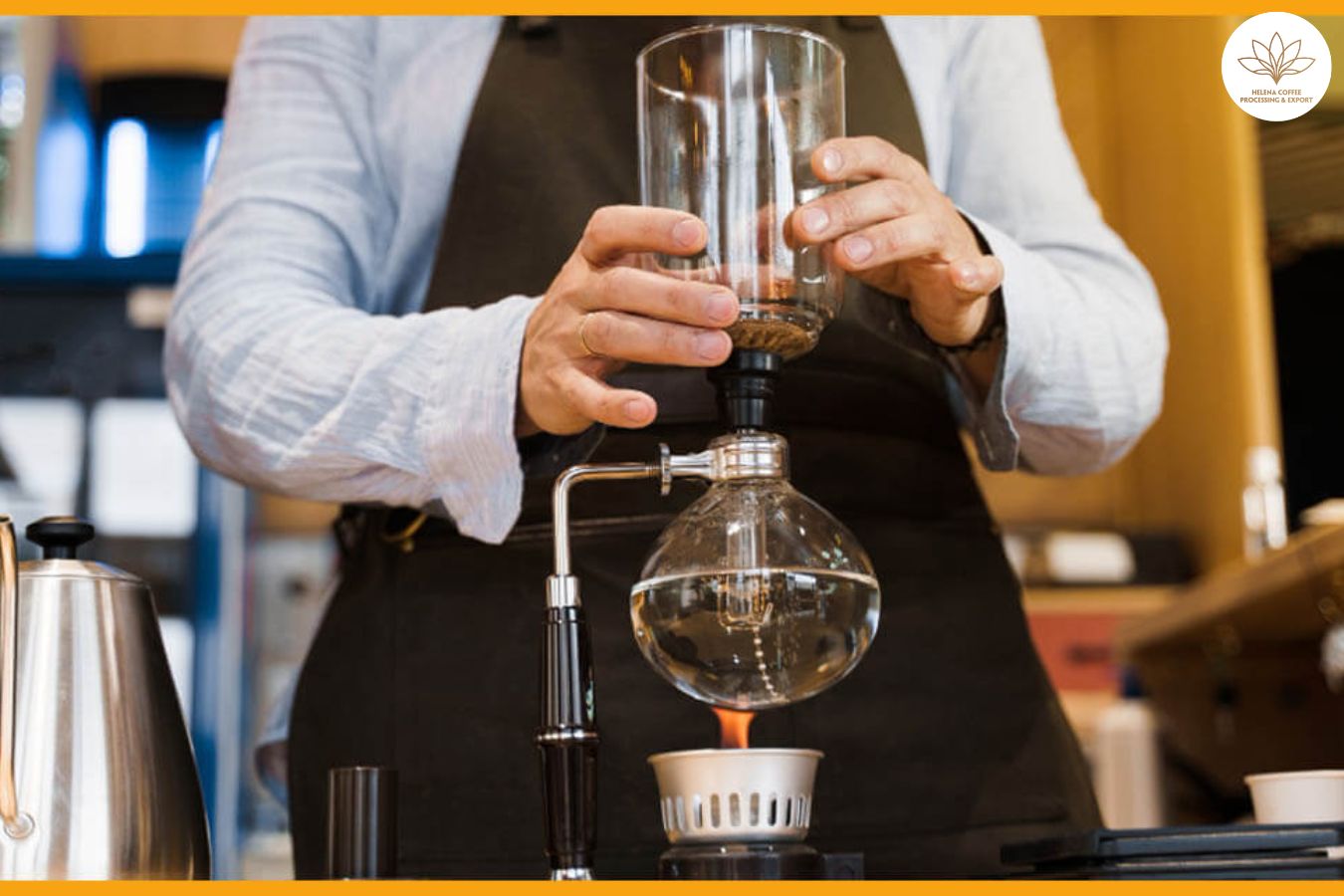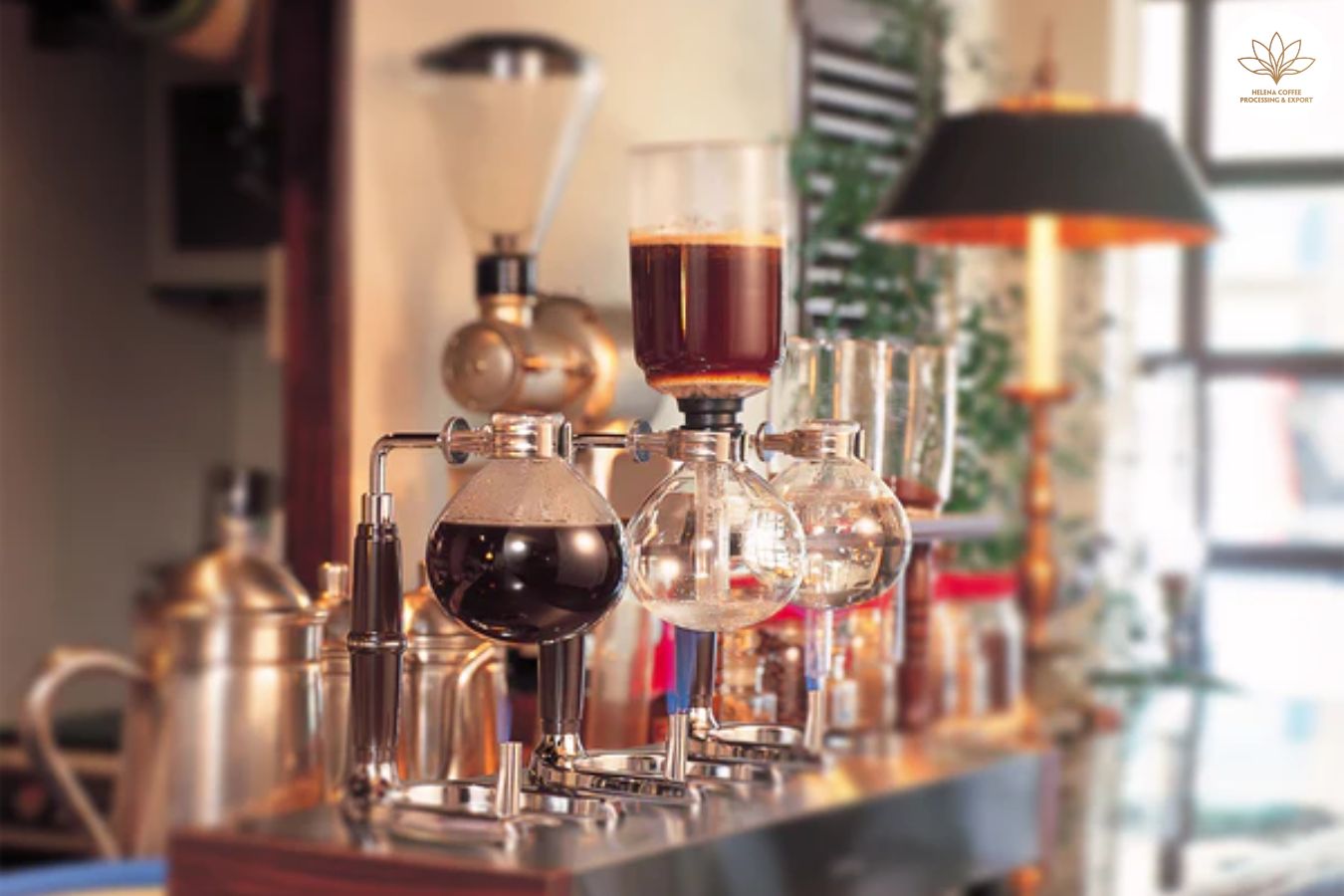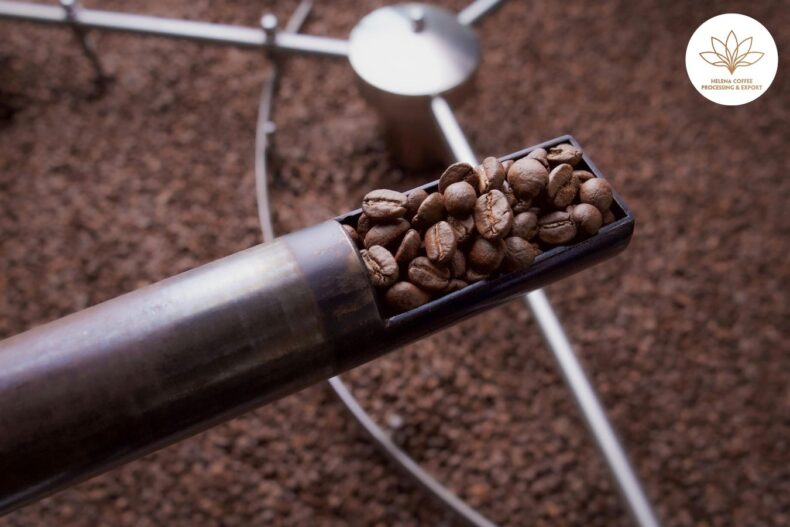
What is syphon brewing: There are countless filter coffee preparation methods, each impacting flavor and texture uniquely. But broadly, there are two main brewing categories: percolation and immersion.
With immersion, coffee and water remain in full contact throughout extraction, enhancing body and aftertaste. A popular immersion technique – especially in Japan – is the siphon or vacuum brewer. This novel brewer uses vapor pressure and gravity across two chambers to extract coffee.
But how exactly does the siphon’s immersion process affect flavor and texture? To find out, I spoke with two baristas. Continue reading for their insights into siphon coffee’s distinctive brewing dynamics.
This builds on our previous overview of different filter brewing methods to help determine your best fit. While many techniques exist, understanding the core percolation versus immersion distinction provides a useful framework for choosing your optimal brew.
A BRIEF HISTORY OF THE SYPHON & OTHER VACUUM BREWING METHODS
Here is one way to rewrite the paragraph for improved flow and clarity:
The first vacuum coffee brewer was invented in the 1830s by Loeff of Berlin. But Scottish engineer Robert Napier and French inventor Marie Fanny Amelne Massot commercialized the technology in the mid-1800s.
Napier designed the Napier Coffee Pot using vacuum pressure, though never patented it. Massot helped popularize early syphon models. Since then, many vacuum brewers entered the market, but the Hario syphon dominates Japanese and Taiwanese shops today.
Hirona Yamamoto, Osaka-based barista, explains syphons’ integral role: “In Japan’s past and now, the syphon is indispensable equipment.”

She notes kissatens first opened in the mid-18th century, but grew after WWII amid economic expansion. “More shops opened as everyday social spaces. For their aesthetic, syphons became fashionable.”
Narumi Sato, CEO of Belleville Japan, adds: “During this period, syphons were very popular since baristas could multitask while brewing.”
Though most kissatens focus on pour overs, Narumi believes specialty coffee will drive syphon interest growth.
In summary, the syphon’s popularity in Japan traces back to early commercialization in the 1800s. But postwar social and economic factors led it to become a standard cafe fixture, enabling multitasking and aesthetically aligning with the kissaten experience.
HOW DOES IT WORK?
Here is one way to rewrite the paragraph for improved flow and clarity:
Unlike most methods, syphons use pressurized water vapor for extraction instead of time or gravity. Syphons have two chambers – top for vapor pressure and bottom for initial water.
Heating creates a vacuum in the top chamber due to air pressure differences. As the lower water boils, vapor pressure increases. Being less dense, the vapor/air mixture expands until the chambers connect via the spout. This draws water up to the top.
When heat is removed, pressure drops and brewed coffee flows back down while used grounds remain above.
Vacuum extraction is faster because oxygen is absent. With fewer gas particles inhibiting it, volatile compounds extract quickly. This is noticeable in automated vacuum cold brewers producing cold brew in minutes versus hours.
In summary, syphons’ vacuum environment enables rapid extraction by using vapor pressure to transfer water, then letting pressure fall to return brewed coffee. The lack of gases facilitates faster extraction of volatile compounds. This novel vacuum process allows syphons to brew coffee in a fraction of the time of non-pressurized methods.
How to brew a syphon
Here is one way to rewrite the paragraph for improved flow and clarity:
Despite its reputation for complexity, Narumi Sato says syphon brewing is straightforward:
- Add water to lower chamber, using 1:15 ratio of 16g coffee ground slightly finer than V60 and 240g water.
- Attach heat source below and insert filter and spout in top chamber. Once boiling, vapor pressure transfers water up.
- When most water is upper chamber, vigorously stir to create whirlpool.
- Add coffee, stir briefly, and seal aromas with lid.
- After 25 seconds, remove heat to pull brewed coffee back down. Total time is 1-1.5 minutes.
Per Narumi: “Pour over needs 3 minutes of focus versus syphon’s 20-30 seconds of concentration, making it much simpler.”
In summary, while perceived as complicated, syphon brewing only requires brief periods of hands-on work for stirring and coffee addition. The automated vacuum pressure functions handle the remaining extraction. This brevity makes syphons surprisingly beginner-friendly compared to manual pour overs demanding unbroken focus.
Why is stirring your coffee so important when using a syphon?
Here is one way to rewrite the paragraph to improve it:
Proper agitation is crucial for even extraction when brewing with any method, and siphon coffee is no exception. The World Siphonist Championship recommends using a double-stir technique to achieve optimal flavor.
First, create a whirlpool by stirring the water in the top chamber before adding coffee. This initial vigorous stir ensures the grounds will be thoroughly saturated when introduced to the water. As expert Narumi explains, “The first stir is the most important one.”
After adding the coffee, do a second gentle fold of the grounds. This allows the coffee to degas similar to the bloom phase of pour-over brewing. Hirona notes, “If you don’t allow the grounds to fully saturate, it is more difficult to achieve a high-quality extraction.”
A sign of excellent stirring technique is the formation of a dome of coffee grounds at the base of the top chamber, with larger particles settled at the bottom. This dome results from properly agitating the siphon brew.
HOW DOES SYPHON COFFEE TASTE?
Here is one way to rewrite the paragraph:
The syphon brewing method fully immerses the coffee grounds in water throughout the entire extraction, like other immersion methods. However, syphon coffee produces a distinct sensory profile, especially in terms of texture and mouthfeel.
This results primarily from the vacuum process and the use of a cloth filter during brewing. Both enhance the mouthfeel compared to other immersion methods. Narumi explains the syphon’s popularity in Japan by this characteristic, saying “When I went to the Belleville coffee shop in Paris, baristas were describing the flavor of the coffee, but not the mouthfeel. In Japan, people like to describe mouthfeel and different foods and beverages.”

Likely this focus stems from linguistic differences. The Japanese language contains far more words describing mouthfeel than English – around 400 versus 80. Mouthfeel is essential in Japanese cuisine, where texture and consistency are highlighted. For instance, the Japanese word “torotoro” conveys a syrupy thickness absent in English.
The syphon brewing process produces an exceptionally smooth, rich mouthfeel that Japanese coffee drinkers savor. This textural emphasis resonates with the Japanese palate.
TIPS FOR USING A SYPHON TO BREW COFFEE
Here is one way to rewrite the paragraph:
The syphon brewer is extremely versatile, accessible to brewers of all levels according to Hirona. She states, “You can brew any type of coffee with a syphon – it doesn’t matter if it’s light or dark roast, commodity or specialty-grade.”
Narumi concurs that dark roasts often suit syphon brewing well. She explains, “The higher oil content in darker beans becomes more rounded, producing a richer-tasting coffee.”
Many opt for a cloth filter when syphon brewing, as it allows more oils to extract, enhancing mouthfeel. However, cloth filters must stay clean. When reused, improper cleaning and drying can quickly foster mold and impart sour flavors.
To prevent this, squeeze out excess water after use and store cloth filters in the freezer. Run them under hot water before next use. Proper care keeps reusable cloth filters fresh and odor-free.
In summary, syphon brewing adapts to any coffee type and user experience level. Dark roasts shine when their inherent bitterness balances into rich flavor. Cloth filters boost mouthfeel but need proper maintenance to avoid mold and souring. With basic best practices, anyone can brew fantastic coffee on a syphon.
FAQS:
- Schools Of Brewing Coffee: Barista Training Short Programs
- How to Roast Great Coffee at Home: A Starter’s Guide (Roast With A Pan)
- Coffee – Brown Color Group


